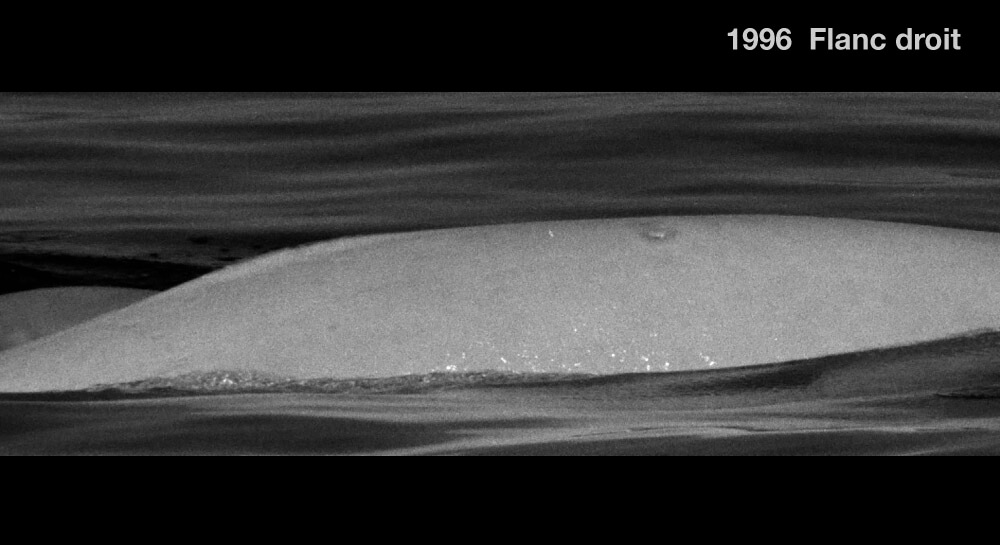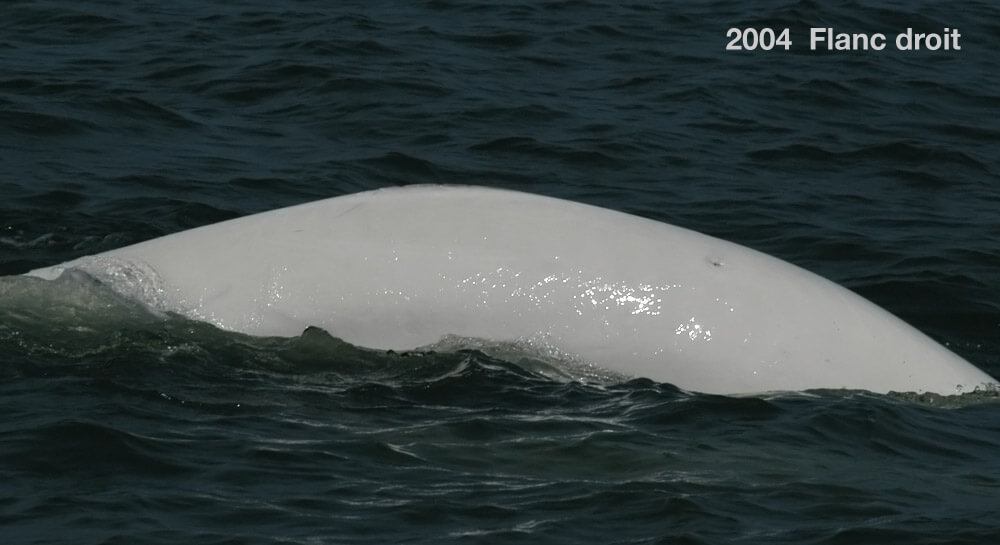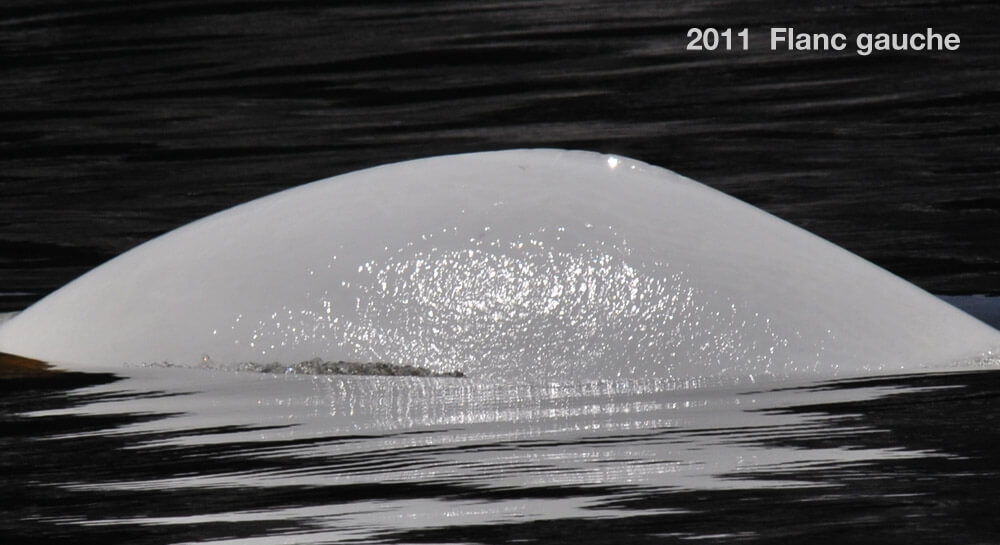Elle
Beluga


In the process of adoption Lyne Morissette
-
ID number
DL0631
-
Sex
Female
-
Year of birth
Before 1992
-
Known Since
1996
Distinctive traits
Identifying Elle from the left side requires meticulous study of the details of her dorsal crest. Her telltale field mark is the small round scar on her right side, in front of her dorsal crest.
Life history
It was in 1996 that we encountered Elle for the first time. At the time, she was slightly gray, almost white. Beginning in 2004, she was always “noted” as being white. Belugas fade from gray to white in colour between the ages of 12 and 16. Elle was thus probably born between 1988 and 1992! Her sex was determined by genetic analysis of a biopsy taken on July 22, 2010: Elle is a female.
In the summer range, females form large communities in which they care for newborns and young. These communities are faithful to traditional territories and exchanges between them are uncommon. At the present time, the sectors that Elle frequents and the individuals with whom she associates lead us to believe that she belongs to the Saguenay community. In fact, we have regularly observed her in the company of the Saguenay matriarchs, i.e. Slash, Athéna, DL1050 and DL0169.
The stories of young belugas and the chance to monitor the evolution of their behaviour are our best tools for understanding their social lives. By better understanding how belugas live, we will be able to better protect them.
Observations history in the Estuary
Years in which the animal was not observed Years in which the animal was observed
Latest news
Early departure from the Tadoussac wharf aboard the BpJAM, GREMM’s inflatable research vessel. We encounter our first herd of belugas at 8:15, which consists of six individuals, some white, some grey. We photograph them before continuing toward a second, slightly larger herd of fifteen individuals. We quickly shoot them with our camera and then switch over to the drone. We hover over the individuals, but must quickly bring our flying camera back on board on account of worsening weather conditions. A large tide rip seems to be attracting belugas. As we approach, we see dead and dying capelin floating on the surface. Gulls and gannets are circling overhead, eyeing up their next meal. Are the belugas hunting below the surface? Sorting through our photos back in the office, we recognize Elle.
The Bleuvet is near Pointe Noire, where a herd of roughly 40 individuals is actively swimming. We observe a number of surface activities, including pectoral fins and tails emerging from the water. Amongst the individuals we photograph is Elle, who is swimming with Dorothy. At the beginning of the encounter, the animals were mostly stationary, diving and resurfacing at the same location. Was this a feeding behaviour? At the end of the contact, the belugas began to head up the Saguenay. It was then that we spotted a calf swimming close to a female with a small gray line resembling a pencil stroke on her right flank. The crew did not immediately recognize this individual.
We’re observing the beluga “Elle” south of Île Rouge, off the shores of Tadoussac at the mouth of the Saguenay Fjord. Elle is swimming in the company of some thirty individuals, including adults and young. The herd splinters into several small groups of three individuals who are swimming quite close to one another. In addition to the belugas, we are witness to nearly a dozen seals and several minke whales. Prey are likely plentiful here. While photographing individuals one after the next, we are thrilled to discover a newborn at the sides of one of the females, recognizable by its small size and “café au lait” colouring.
Elle is sighted in the Saguenay Fjord in a herd of some thirty belugas, including adults, young and three calves. We also recognize DL0030, one of the most familiar belugas to our research team. In the course of this encounter, we observe a curious behaviour: two young belugas are swimming close to the surface in a figure-S pattern and spatting out water. Are they chasing prey?
To capture their prey, belugas suck them in. When they miss their target and come up empty, they spurt out water. Might it be an eel? Despite the paucity of direct observations, scientists have long believed that eels might form part of belugas’ diet, especially in the fall when the latter are migrating in the St. Lawrence.
Sponsor

The sponsor
Lyne Morissette adopts Elle (pending).
For Lyne’s 40th birthday, let’s work together to accomplish something special and significant for Elle by adopting this beluga. At the same time, we’ll be acknowledging the work and achievements of a great woman while supporting a cause that she cares about deeply and which is important for both us and for future generations.
Participate in the adoption by clicking here.
Participants in the group adoption of Elle: Cindy Grant, Eliane, Annabelle, André, Lisa Treau De Coeli, Laure de Montety, Mélanie Lévesque, Nicole Moisan, Becca Scarratt, Esther Blier, Christian Gagnon, Mellata Ahmed, Pascal Longtin, Lise-Anne Prouls, Pauline Thomas and Claire Themens.





